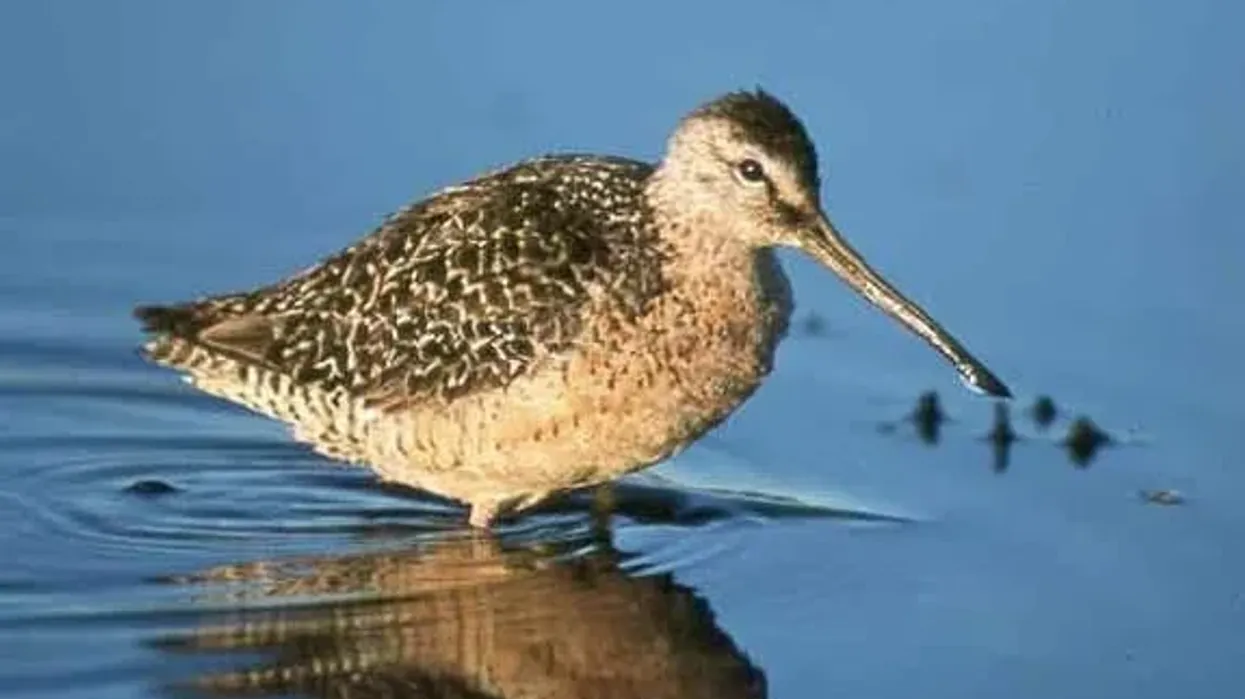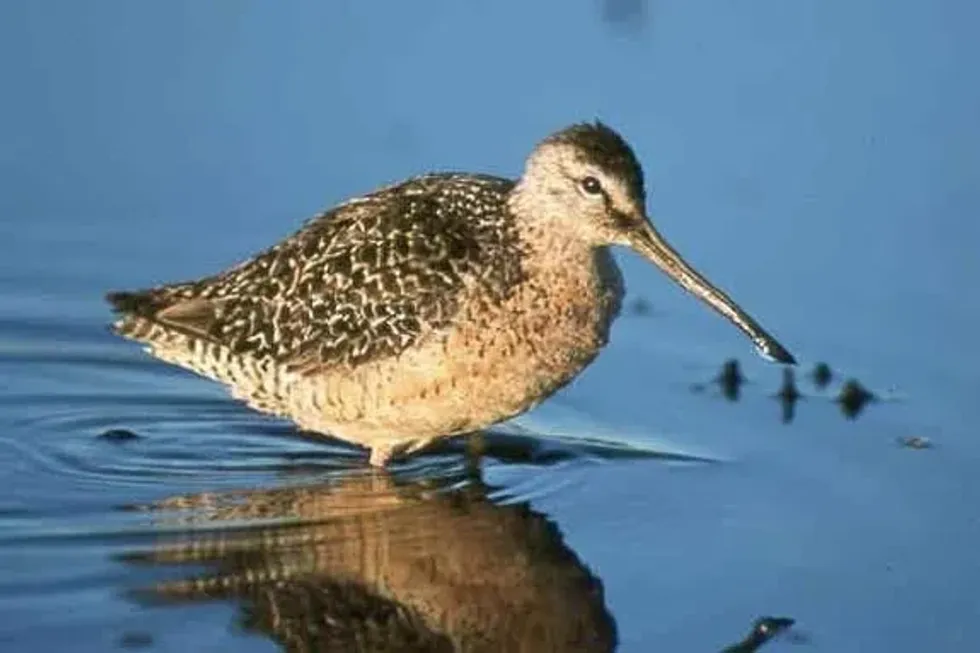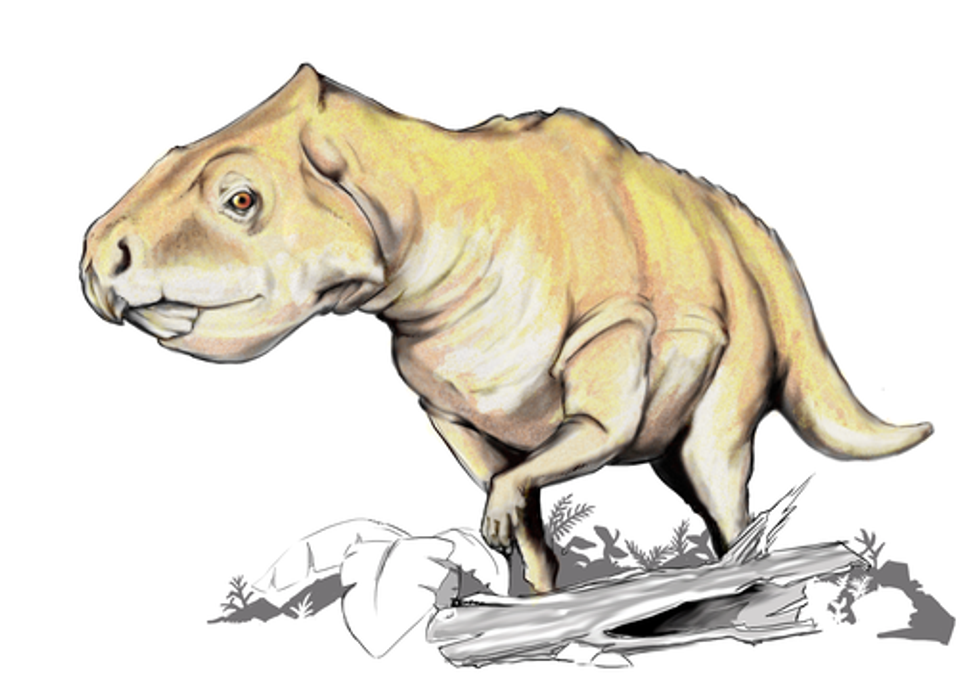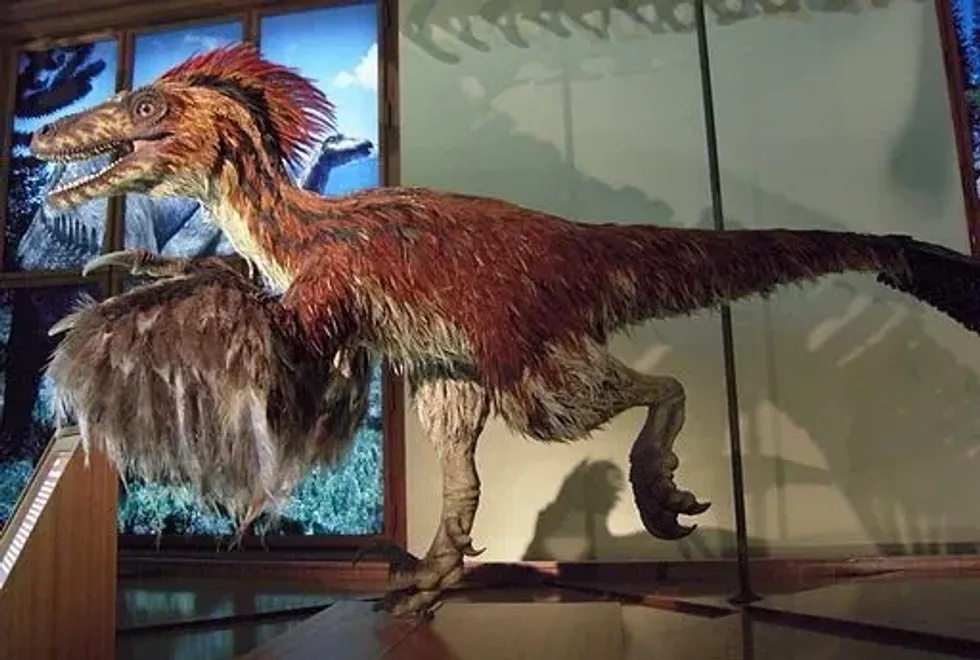The dowitcher bird belongs to the Scolopacidae family. These are shorebirds, also known as sandpipers. Endemic to North America, these birds inhabit the wetlands of freshwater habitat and shallow water habitat. The two species of this genera are long-billed dowitchers and short-billed dowitchers.
These two billed dowitcher species are closely identical and can be mainly be differentiated with their flight calls. They have a breeding plumage, winter plumage, and migration plumage. They search for food with their long bill into the mudflat like a sewing machine.
The long-billed dowitcher has white supercilium with dark stripes that continue across through the eyes. In addition, they have a unique black-barred whitetail and a giant white rump that stretches to the middle of the back. The average length is 11.4 in (29 cm), weighing 4.6 oz (131 g).
The breeding season varies from April to early September.
Furthermore, if the above content interests you, check out hawk facts and hyacinth macaw facts!
Dowitcher Interesting Facts
What type of animal is a dowitcher?
The dowitcher of the genus Limnodromus is a bird. It is a migrating shorebird of the Scolopacidae family.
What class of animal does a dowitcher belong to?
The Limnodromus bird is an avian, and it belongs to the class Aves.
How many dowitchers are there in the world?
As per studies conducted, there were 500,000 long-billed dowitchers and 150,ooo short-billed dowitchers in 2012 and 2015 respectively in North America.
Where does a dowitcher live?
The dowitchers are mostly found in wet mud or marshes.
Long-billed dowitchers adapt to the shores of Washington and Virginia down south to Guatemala and across Mexico.
Short-billed dowitchers are endemic to southern Alaska, central interior Canada, and northern Quebec. The winters are spent at the coastline of California and Virginia south towards the Gulf Coast, West Indies, Baja Peninsula, and coastal Mexico.
What is a dowitcher's habitat?
These birds, ling-billed dowitchers, are indigenous to the tundra during the breeding season. And prefer to be close to marshes, edges of freshwater ponds, and mudflats in winter.
Short-billed dowitchers inhabit salt marshes, tidal estuaries, creeks, and mudflats.
Who does the dowitcher live with?
Dowitchers are social birds and often flock together in their range.
How long does a dowitcher live?
Normally they have a lifespan of 10 years in the wild.
How do they reproduce?
The male dowitchers will signal to females by singing. Then, the males compete in tracking the female in flight. They fly swiftly, displaying their aerial skills. Post copulation, they sing and waver 15 ft (4.6 m) in the air.
The nest is set up in wet areas. Once they have mated, the male and female dowitcher form a bond. Long-billed dowitchers nest in wet areas amidst tall grasses of ridges and raised mounds. The nest is nothing but a simple slump and is made up of grass and leaves.
The long-billed dowitcher deposits around four eggs per clutch, and this will be the only brood of the season. Eggs are incubated for 20 days and are guarded by both parents. The chicks have fine, soft feathers and are capable of feeding independently.
They prefer breeding grounds of freshwater meadows and sedges. And transfer to lakes and ponds after hatching.
The short-billed usually set up nests near shallow water range, and the incubation period is for 21 days. After that, the female might leave the young post-hatching, and the male tends to raise the chicks.
The long-billed shorebird breeding range is along the Hooper Bay to west Mackenzie in Alaska and across Yana River to Chukotka Peninsula and Anadyr lowlands in Siberia.
The short-billed birds breed in shallow habitats of Quebec, central Canada, and Alaska.
What is their conservation status?
Dowitchers are classified as of Least Concern by the ICUN.
Dowitcher Fun Facts
What does a dowitcher look like?

Dowitchers are medium-sized sandpipers.
In the breeding plumage, adults are dressed by a dark crown on their head and a rufous chest, neck, and belly underneath with black bars on the breast. When plumage is fresh, flanks have white barring.
As feathers get older, fewer black bars may appear, and the breast looks dark reddish. The black, buff, and brown, enhance the crown and black. In addition, the upper back and wings have black, buff, and white spots, which may look dark brown.
In non-breeding billed dowitcher Limnodromus scolopaceus, adults are dull grey. Paler white belly contrasts darker breasts and upper parts. The gray lightens from the breast to the chin.
The wingspan is 18.5 to 19.3 in (47 to 49 cm).
The juvenile long-billed dowitcher Limnodromus is similar to that of the breeding adult, except a bit paler. Tertiary feathers are dark gray with narrow and dull buff edges. The fringed chestnut upper parts and uniform gray breast are slightly distinguished from the pale rufous breasts and lower belly.
The bill is in the range of 2.4 to 2.8 in (62 to 72 mm). The male bill is in a lesser range as they have small bodies. The black bills are straight and transform to yellowish olive-green at the base, and their legs are yellow.
The winter plumage of the short-billed dowitcher gray.
During migration and winter, it isn't easy to differentiate between long-billed and short-billed dowitchers plumage.
The difference in the tertiary feathers can distinguish a juvenile.
How cute are they?
These North American birds have subtle earthy colors with distinct patterns of feathers. They actively hover around the beaches with teetering and keek calls.
How do they communicate?
The dowitcher, in-flight, emits high frequency double or triple note series of high sharp 'keek,' or a less common 'tu,' which it may repeat eight times.
Their alarm cue of keek resonates explosively.
The long-billed dowitcher vocalizations are more loud and harsh in comparison to soft and mellow short-billed cues.
How big is a dowitcher?
The dowitchers are medium-sized birds of the sandpiper family. The average length of dowitchers is 11.5 in (29 cm), which is six times less than the length of the far eastern curlew.
How fast can a dowitcher run?
The dowitchers are marsh racers, though the exact speed is not known, they search like a sewing machine in flight on the mudflats. These birds during migration are recorded to fly at speeds of 50 to 80 mph (80.4-128.7 kph).
How much does a dowitcher weigh?
The large-billed dowitcher weighs from 3.1 to 4.6 oz (88 - 131 g), and the short-billed weighs from 2.6 - 5.5 oz (73 - 155 g), which is approximately ten times less than the weight of Eurasian curlew 2.9 lb (1.3 kg) of the sandpiper family.
What are the male and female names of the species?
The male and female birds are addressed as male dowitchers and female dowitchers. In addition, a group of these birds is often called a hill, fleet, flight, or fling.
What would you call a baby dowitcher?
A baby dowitcher is often called a juvenile.
What do they eat?
The dowitchers dig their bills deep into sand or mudwater to search for invertebrate prey. They prefer to pick from their breeding ground, and they feed on insects and insect larvae.
Other than this, they also eat mollusks, marine worms, crustaceans, and other benthic creatures. They are bestowed with tactile receptors on the tip of their bill. Hence they invade waters with their head inside it like a sewing machine.
Are they poisonous?
Dowitchers are not toxic birds.
Would they make a good pet?
There is no authenticated data on having these birds as pets. And however, as these birds are shorebirds and migratory in nature, it is ideal not to restrict them into an artificial environment and restrict their range.
Did you know...
Their flight calls determine the dowitcher identification.
The long-billed curlew is the brown bird of the Scolopacidae family with the longest beak, which is eight and a half inches.
The vocal calls of these birds can get very loud, especially during alarming.
During migration, they fly as high as 20,000 ft (6096 m).
Are they predators?
The dowitchers are shorebirds, the shorebirds are predatory, and they prey on benthic invertebrates.
How to tell a short-billed dowitcher from a long-billed dowitcher?
The tail of the long-billed dowitcher is longer than the short-billed bird.
The thick black bars of the tail are more in number than the white bars in the long-billed.
The black and white barring on the tail is noticeably broad.
Here at Kidadl, we have carefully created lots of interesting family-friendly animal facts for everyone to discover! Learn more about some other birds from our dodo facts and house wren facts pages.
You can even occupy yourself at home by coloring in one of our free printable dowitcher coloring pages.









